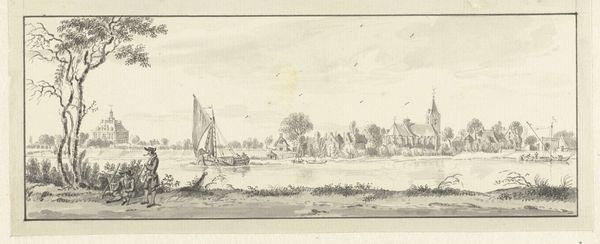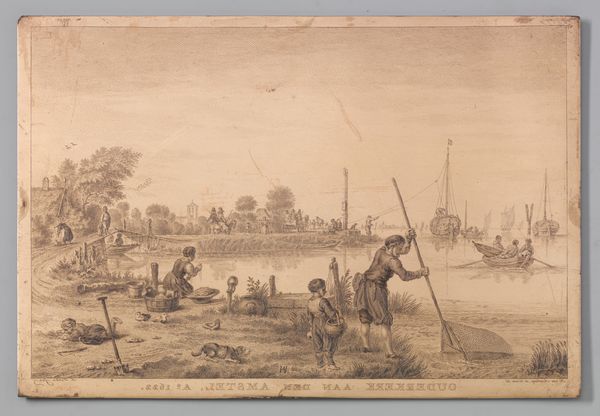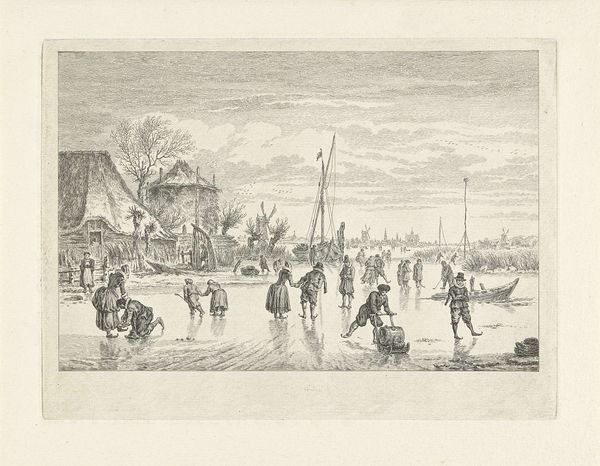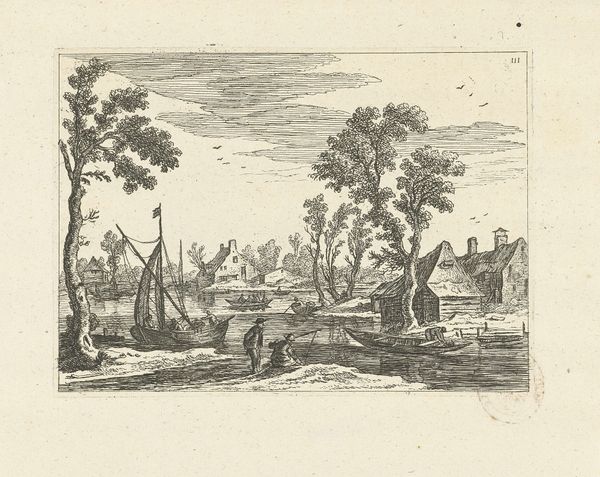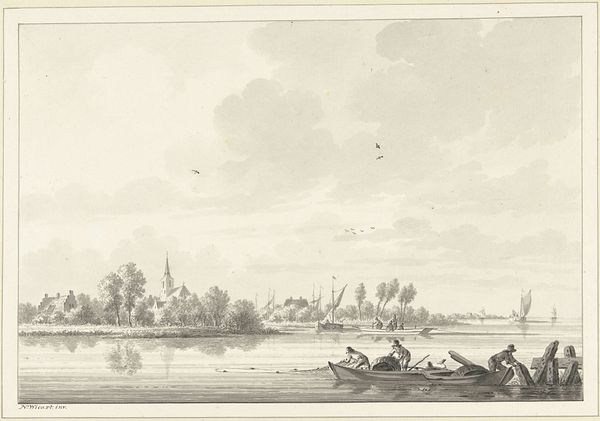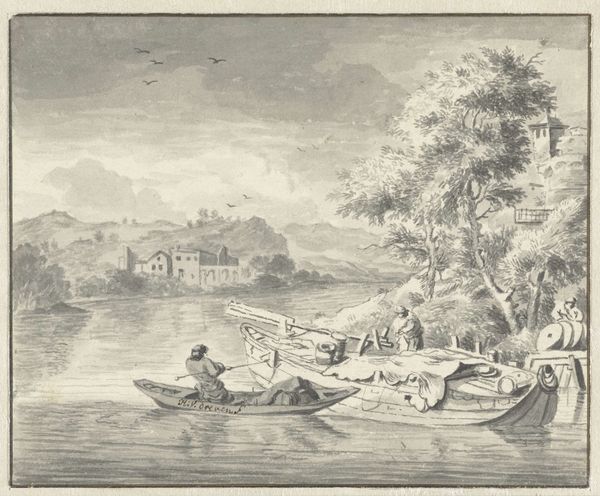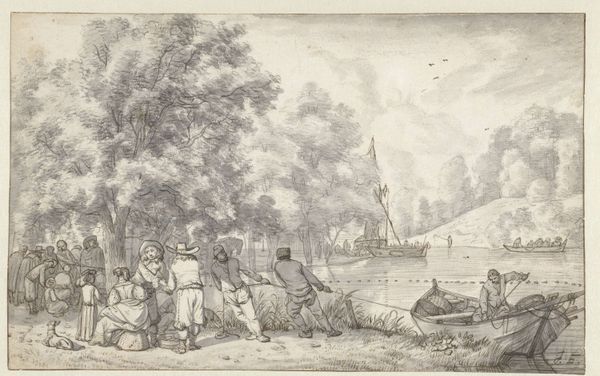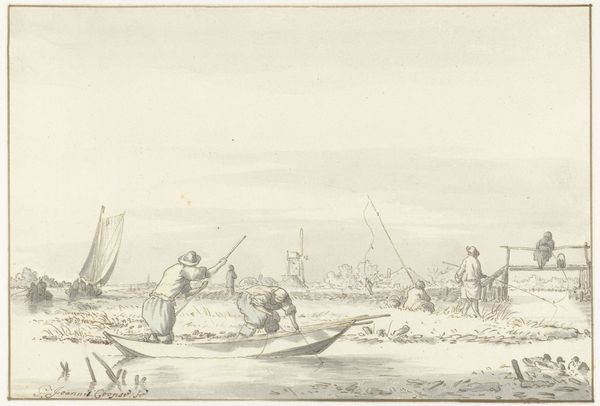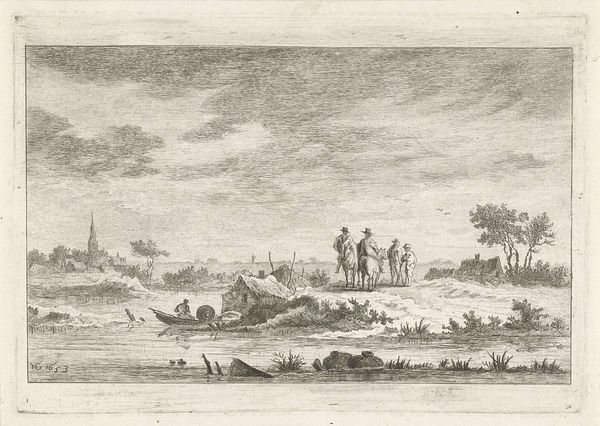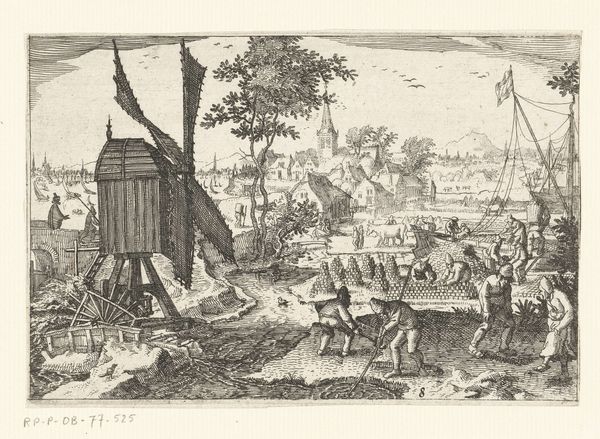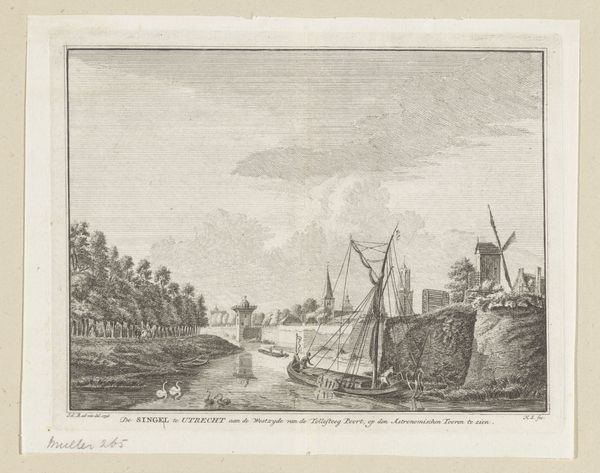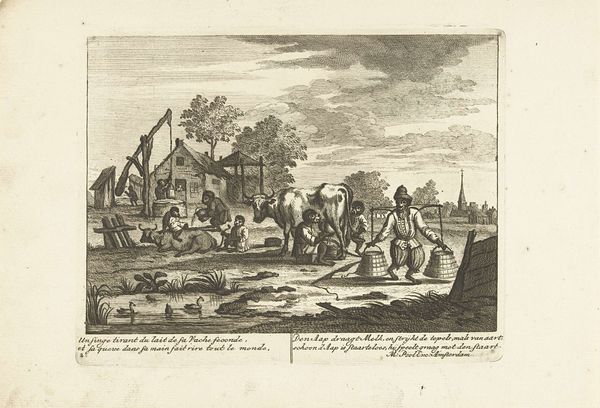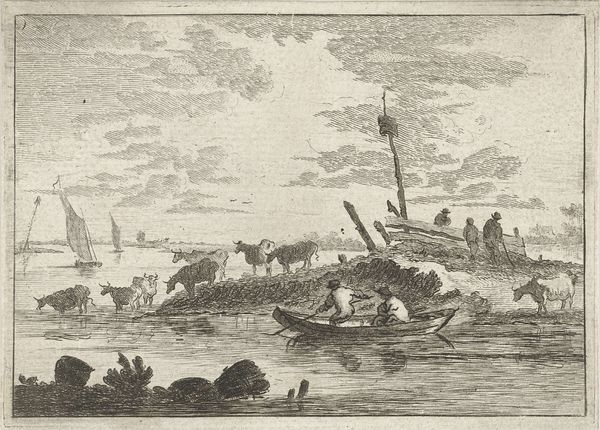
print, engraving
#
dutch-golden-age
# print
#
pen sketch
#
old engraving style
#
landscape
#
line
#
genre-painting
#
engraving
#
realism
Dimensions: height 216 mm, width 317 mm
Copyright: Rijks Museum: Open Domain
Editor: Here we have Simon Fokke's "Figuren op de oever bij Ouderkerk aan de Amstel, 1622," an engraving from somewhere between 1722 and 1784. It gives me such a sense of everyday life, with people fishing and going about their business. What can you tell me about it? Curator: Well, at first glance, it seems a charming genre scene, but let's delve deeper into its historical context. Considering the period, the Dutch Golden Age was flourishing. Can we consider this idyll without considering the stark realities of wealth built upon colonial exploitation and trade? How do we address the contrast of leisurely activities in the foreground versus what's omitted in the background? Editor: That's a very different way to look at it. I hadn’t thought about the economic backdrop at all. I was just focusing on the figures in the foreground. Curator: Precisely. Now consider the placement and postures of the figures – a man fishing, a woman working near the water, and children present as helping hands. What roles are these people enacting and how do they reflect 18th-century gender and labor roles? Are there any subtle power dynamics at play? What kind of statement is made about these subjects by not depicting any figures from the ruling class or upper crust of Dutch society? Editor: I see your point. Now, noticing the roles assigned by gender and age within this slice of "everyday life" adds a layer of social commentary that I initially missed. Curator: Exactly! And understanding what is *not* depicted can be as important as what is. Consider how Fokke’s choice of subject, this imagined community by the water, fits or perhaps clashes with broader socio-political narratives of the Dutch Golden Age. How does art like this, portraying seemingly simple scenes, actually serve the society that views and cherishes it? Editor: This has given me a completely new lens through which to consider art. It's not just about what is visually present, but also what historical, social, and economic contexts shape the scene. Curator: Indeed. By examining art through these intersectional lenses, we gain richer, more critical understandings, appreciating not just aesthetics, but also the deeper narratives that these images silently broadcast about culture, power, and identity.
Comments
No comments
Be the first to comment and join the conversation on the ultimate creative platform.
